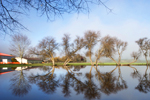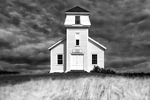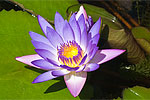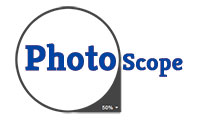Best DSLR Cameras under $1000
- The Shootout
- Sony a65 Review
- Canon T4i Review
- Canon T3i Review
- Nikon D5100 Review
- Nikon D3200 Review
Nikon D5100 Review
Nikon is very good at positioning its DSLR camera lineup to give consumers a clear progressive choice of features, performance and build as the models become more expensive.
When the Nikon D5100 was released last year, it fit neatly between the entry level D3100 and the enthusiast D7000. The D5100 was a definite step up in image quality from the D3100.

And though it shares its 16MP APS-C sensor, along with that image quality with the D7000, the more expensive D7000's build is much sturdier.
The release of the 24MP D3200 this year seems to upset the apple cart, but the image quality and video capabilities of the D5100 still let it maintain its standing above the D3200.
As you can see from the lists below, the D5100 is not a perfect camera, but its quirks and shortcomings are more than compensated by its superior image quality, even at high ISOs.
What's Hot about the Nikon D5100
- 16MP CMOS APS-C sensor
- Excellent image quality and dynamic range
- Good quality at ISO's of 3200 and above
- Articulating screen
- Wide selection of lenses
- HDR shooting mode
- Ample hand grip and good overall balance
- 1080p video at multiple frame rates
- Input for external microphone
- Continuous AF in Movie mode
- Special effects shooting modes
What's Not So Caliente about the Nikon D5100
- Relatively slow under 5fps continuous full resolution shooting
- No integrated image stabilization, (on the lens only)
- No Panorama or 3D shooting modes
- No Built-in GPS
- Odd placement of some controls
- Continuous Autofocus in Movie mode is noisy and jumpy
- No built-in autofocus motor
Design
When you first pick the Nikon D5100 up, you are comforted by its solid grip that allows three fingers to wrap around it. And the large (3" and 921,000 dot) fully articulating screen is a pleasure to view and use.

What's missing for the photographer who likes to change settings on the fly are dedicated buttons for common operations. For example, there are no ISO, White Balance, and Bracketing buttons.
Often you will find them populating the rear multi-selector wheel, but on the D5100, they are MIA. The designer's solution was to include a programmable Function button.
The problem is twofold. First, you can only program one operation onto the button. And then, they placed that button in a hard to reach spot on the front next to the lens.
To their credit almost all of the important controls can be accessed by pushing the Info button and navigating an easy to read menu.
The other interface oddity is the separation of the Live View and Movie functions, which are often integrated on one button. On the D5100, to switch to Live View, you pull a little lever around the Mode dial at the top. Then to start recording a Movie, you hit red Movie button that is offset from the shutter release. The whole process is unnecessarily cumbersome.
A couple of other design issues that are common to most Nikons, the D5100 does not have image stabilization built in to the body. VR (Vibration Reduction), as Nikon labels it, is only featured in some, not all, of their lenses.
One of the advantages of buying a Nikon or Canon over a Sony, is that Nikon, (as does Canon), has an extensive series of high quality legacy lenses. Sony more than covers the most common lenses. It just cannot match the wide variety offered by Canon or Nikon.
Relevant to that point, the D5100 does not have an integrated autofocus motor and therefore you can attach a Nikon non-AF-S lens, but you will have to focus it manually, just like the old-timers.
Image Quality
Simply, the quality of the D5100's still photos is excellent, both JPEGs and RAW files. As always, if you are pushing for the highest control and range, capture and process RAW files.
In this PhotoScope link, you can compare the D5100 with the D3200. Be sure to cycle through some of the higher ISO settings to see which displays the most noise.
For those who like to shoot in low light situations, the D5100 noise is manageable even at what used to be considered stratospheric ISO's, like 6400.
Don't expect miracles, but if you are posting low resolution images on your website or printing sizes under 8 x 10, that high ISO performance is downright impressive.

The image on the right, (from the Gaultier exhibit at the De Young Museum), was originally captured by the D5100 as a RAW file at an ISO of 1600. It was processed in Camera Raw with a low amount of Noise Reduction. (Click it to see a higher resolution rendering.)
The Full HD video quality is also quite good, though the results can be tarnished by a finicky and noisy autofocus. It has a tendency to search too long, which is accentuated by the noise of the servo motor.
One suggestion is to deactivate the autofocus feature and go old school. First, minimize the need to refocus a shot and when it's required pull focus manually.
Features
To start with the positives, the D5100 does offer a whole host of Scene modes like Sports, Close-up, Party/Indoors, and my personal favorite, Pet Portrait (cute kitty). They could be helpful to the beginner, who does not want to worry about making Shutter, ISO and Aperture settings.
Definitely, the more fun and creative options are the Special Effects like Night Vision, Color Sketch, and High Key.

If you have seen the D5100 commercial on TV, the Color Selection tool really works, even when shooting videos.
I do miss the lack of Panorama and 3D shooting modes. The camera does include an HDR mode that captures two images with an adjustable exposure differential range of up to 3 EV.
As for GPS, the D5100 is GPS capable, but the feature is not built in. You can buy a separate GPS adapter that will plug into the camera and feed longitude and latitude readings to the image's EXIF file.
Verdict
The Nikon D5100 won accolades when it first came out in 2011 and its capabilities should keep a DSLR fan happy for at least a few more years.
Especially at its current price point, the D5100 is an attractive value. Whenever the D5200 hits the market, the D5100 could become a bargain hunter's delight.
Nikon D5100 Photo Gallery
More about the Nikon D5100
In This Shootout:
The Shootout
Sony a65 Review
Canon T4i Review
Canon T3i Review
Nikon D5100 Review
Nikon D3200 Review
Reader Comments(8 comments)
|
Posted Oct 10, 2013 8:31:16 PM
|
|
By Big Mike |
Post a Comment Alert Moderator |
|
Posted Nov 2, 2012 8:54:18 PM
|
|
By Kuro |
Post a Comment Alert Moderator |
|
Posted Oct 31, 2012 11:52:07 AM
|
|
By Peteralex |
Post a Comment Alert Moderator |
|
Posted Sep 2, 2012 7:49:54 PM
|
|
By krazi311 |
Post a Comment Alert Moderator |
|
Posted Aug 28, 2012 3:30:02 PM
|
|
By Dick De Jong |
Post a Comment Alert Moderator |
Suggesting lenses for others is always a tough call for reasons too long to list.
If you are interested in high quality and are ready to make the commitment, then Zeiss lenses are great choices, but they come at a premium price tag.
For example, the Sony 85mm F1.4 ZA Carl Zeiss Planar T* is a wonderful portrait prime lens. Of course, at $1600, it's almost twice the price of the a65 body alone. But good lenses can last through multiple generations of cameras.
|
Posted Aug 28, 2012 2:55:55 PM
|
|
By Dick De Jong |
Post a Comment Alert Moderator |
I've been shooting video for decades and I'm still not convinced that any of these DSLRs are the perfect solution for capturing video. (I listed many of those reasons in my article, Making Home Movies: http://www.2cameraguys.com/Making-Home-Movies-with-Digital-Cameras.htm)
With that said, I do not discount your preference of the T4i over the a65 when shooting video. I will say that if you plan to use autofocus with any of these cameras, then expect to capture segments of out of focus searching, which you will need to edit.
And if you want higher quality audio, then you will need to use an external microphone and ideally a good audio recorder.
I'll admit that I am still rating these cameras more for their still image abilities and less on their video. Accordingly, the Sony a65 is on the top of my list. But as I've said, the T4i is a very good camera, which you should enjoy.
|
Posted Aug 14, 2012 12:06:07 PM
|
|
By frazzywig |
Post a Comment Alert Moderator |
|
Posted Aug 9, 2012 6:53:25 PM
|
|
By Art |
Post a Comment Alert Moderator |






















